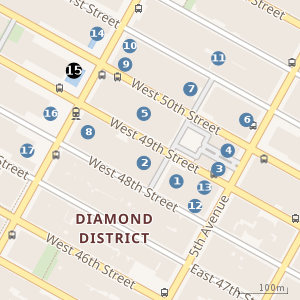1251 Avenue of the Americas
1251 Avenue of the Americas, formerly known as the Exxon Building, is a skyscraper on Sixth Avenue (also known as Avenue of the Americas) in Manhattan, New York City, between 49th and 50th Streets. It is owned by Mitsui Fudosan. The structure is built in the international style[2] and looks like a simple cuboid devoid of any ornamentation. The vertical façade consists of alternating narrow glass and limestone stripes. The glass stripes are created by windows and opaque spandrels, forming continuous areas that are washed by machines sliding down the façade. A seven-floor base wraps around the western portion of the building, and there is a sunken plaza with a large two-tier pool and fountains facing Sixth Avenue. In the plaza stands the bronze statue named Out to Lunch[3] by John Seward Johnson II—of the same series as the one standing outside 270 Park Avenue.[4]
| 1251 Avenue of the Americas | |
|---|---|
The base of 1251 Avenue of the Americas | |

| |
| General information | |
| Status | Complete |
| Type | Office |
| Architectural style | New Formalism |
| Location | 1251 Avenue of the Americas, New York City, New York, USA |
| Coordinates | 40°45′36″N 73°58′53″W |
| Construction started | 1967 |
| Completed | 1972 |
| Opening | 1972 |
| Owner | Mitsui Fudosan |
| Height | |
| Roof | 750 feet (230 m) |
| Technical details | |
| Floor count | 54 |
| Floor area | 2,101,115 sq ft (195,200 m2) |
| Lifts/elevators | 36 |
| Design and construction | |
| Architect | Wallace Harrison |
| Structural engineer | Edwards & Hjorth |
| Main contractor | George A. Fuller Co. |
| References | |
| [1] | |
Background
The building was part of the later Rockefeller Center expansion (1960s–1970s) dubbed the "XYZ Buildings".[5] Their plans were first drawn in 1963 by the Rockefeller family's architect, Wallace Harrison, of the architectural firm Harrison & Abramovitz.[6] Their letters correspond to their height. 1251 Avenue of the Americas is the "X" Building as it is the tallest at 750 ft (229 m) and 54 stories, and was the first completed, in 1971. The "Y" is 1221 Avenue of the Americas, which was the second tower completed (1973) and is the second in height (674 ft and 51 stories). The "Z" Building, the shortest and the youngest, is 1211 Avenue of the Americas with 45 stories (592 ft).[7] 1251 is the second-tallest building in the whole of Rockefeller Center, after 30 Rockefeller Plaza.
Despite being one of the 100 tallest buildings in the United States, 1251 Avenue of the Americas is almost impossible to see from more than just a few blocks away as it is flanked on all sides by buildings over 500 feet tall. The result is that even though 1251 Avenue of the Americas is approximately as tall as the tallest buildings in cities such as Boston or Minneapolis, it has almost no presence on the New York City skyline.
In 1989, Exxon announced that it was moving its headquarters and around 300 employees from New York City to the Las Colinas area of Irving, Texas. Exxon sold the Exxon Building, its former headquarters, to a unit of Mitsui Real Estate Development Co. Ltd. in 1986 for $610 million. John Walsh, president of Exxon subsidiary Friendswood Development Company, stated that Exxon left New York because the costs were too high. Its New York offices moved to Brooklyn; it no longer retains a presence in Rockefeller Center.[8]
In May 2013, the structure received silver certification under the U.S. Green Building Council’s LEED for Existing Buildings Rating System.[9]
Art
Inside, on the western end of 1251's atrium hangs an artist-authorized replica of a tapestry Pablo Picasso created for the ballet Mercure, the original of which hangs in the Musée National d'Art Moderne in Paris, France. It was created specifically for the building, as per the plaque beneath it.
See also
References
- 1251 Avenue of the Americas at Emporis
- Žaknić, Ivan (1998). 100 of the World's Tallest Buildings. Images Publishing. p. 56. ISBN 9781875498321. Retrieved December 24, 2018.
- "Frre to be... Philistine". Spy: 85. May 1989. Retrieved December 25, 2018.
- "THE EXXON BUILDING (1251 Sixth Ave.)". Archived from the original on March 3, 2016. Retrieved December 25, 2018.
- Nash, Eric (1999). Manhattan Skyscrapers. Princeton Architectural Press. p. 127. ISBN 9781568981819. Retrieved December 28, 2018.
- Krinsky, Carol H. (1978). Rockefeller Center. Oxford University Press. p. 117. ISBN 978-0-19-502404-3.
- "XYZ Buildings Exxon Building McGraw-Hill Building Celanese Building". Manhattan Skyscrapers. New York, NY: Princeton Archit.Press. pp. 127–130. doi:10.1007/1-56898-652-1_57. ISBN 978-1-56898-545-9.
- Pearson, Anne and Ralph Bivins. "Exxon moving corporate headquarters to Dallas". Houston Chronicle. October 27, 1989. p. A1. Retrieved on July 29, 2009.
- "1251 Avenue of the Americas Earns LEED® Silver Certification". Hines. May 6, 2013. Retrieved December 24, 2018.
